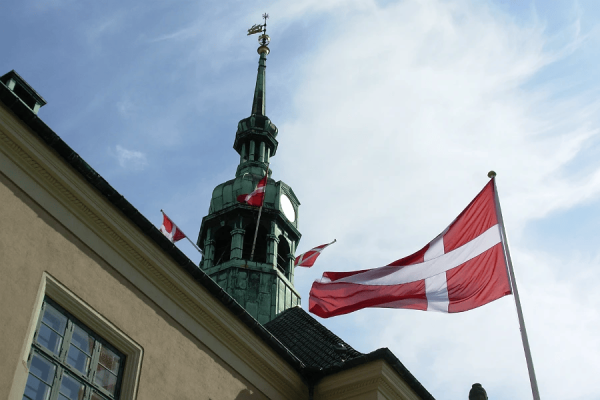
The European Union's BEV market in 2024 demonstrates steady growth but highlights disparities influenced by Germany's unique market dynamics. October 2024 data and long-term trends underscore the critical impact of policy changes on BEV adoption, with Germany's evolving incentives distorting the broader EU picture.
Diverging Market Shares: Germany vs. EU-26
The 12-month moving average of BEV market share reveals a stark contrast between Germany and the rest of the EU. While the EU-26's average BEV market share reached 19% by October 2024, Germany lagged at 15%. This gap has widened since the sudden removal of BEV incentives in Germany in September 2023. Before this policy change, Germany's BEV market share closely followed the EU trend, peaking at 19.5% in August 2023. However, a sharp decline ensued, with Germany’s BEV share dropping to 14.6% by September 2024, while the EU-26 remained relatively stable.

This divergence underscores the significant impact of policy interventions on market behaviour, with Germany's subsidy removal creating a ripple effect that shifted consumer preferences and reduced market share growth.
Market Stagnation in Sales Shere Terms but Absolute Growth
While the BEV market share percentages have stagnated, the absolute number of BEV registrations reveals strong growth across the EU, particularly when excluding Germany. This highlights the resilience of the market outside of Germany, where policy changes have significantly altered consumer behavior and overall trends.
October 2024: A Tale of Two Markets
October 2024 data further highlights the divergence:
- BEV registrations in the EU grew by 2% compared to October 2023, signalling positive growth overall.
- Germany’s BEV registrations continued their steep decline, contributing to a YTD drop of 27%.
- Excluding Germany, the EU BEV market experienced a robust 6% growth in October and 7% YTD, showcasing resilience and steady adoption outside of Germany.
For PHEVs, the disparity is equally evident. Germany’s PHEV registrations increased by 9% YTD, a recovery driven by consumers shifting from BEVs due to the subsidy removal. In contrast, PHEV registrations across the rest of the EU fell by 12% YTD, reflecting a broader decline in plug-in hybrid demand.
Absolute Registrations: Germany’s Distorting Effect
The impact of Germany’s market is striking when analysing absolute registration figures. From January to October 2024:
- With Germany included, BEV registrations fell by 57,749 units compared to the same period in 2023.
- Excluding Germany, BEV registrations increased by 51,850 units, indicating strong growth across other Member States.

Long-Term Market Trends
The 12-month moving average data reveals key trends in the EU BEV market:
- The EU-26’s BEV market share climbed steadily from 6.4% at the end of 2020 to a peak of nearly 20% in mid-2024, reflecting sustained growth and consumer adoption.
- Germany followed a similar trajectory until the abrupt policy change in late 2023. After peaking at 19.5%, Germany's BEV market share has steadily declined, diverging from the EU-26 average and highlighting the lingering effects of the subsidy removal.
The Broader Context: October Insights
In October 2024, BEVs turned positive (+2%) while PHEVs remained in decline (-7%). The shift can be attributed to Germany’s distorting effect:
- Germany’s removal of BEV incentives in September 2023 caused a sales rush before the deadline, followed by a crash. This led to a 27% drop in BEV registrations YTD in Germany, dragging down overall EU figures.
- Without Germany, the EU’s BEV market demonstrated steady growth, with October showing a 6% increase and YTD growth of 7%.
PHEVs exhibited a contrasting trend:
- Germany’s PHEV market grew by 9% YTD, as consumers opted for plug-in hybrids over BEVs after the subsidy removal.
- The rest of the EU saw a sharp PHEV decline, down 15% in October and 12% YTD, as PHEVs lost consumer appeal.
Long-Term Trends and OEM Expectations
The EU-26 has witnessed sustained growth in BEV adoption, with market share rising from 6.4% in 2020 to nearly 20% in 2024. However, Germany’s market, after closely mirroring the EU trend, has diverged due to abrupt policy changes. This shift reflects a mismatch between automakers’ expectations for rapid growth and the market’s actual pace of development.
Conclusion: Context is KeyGermany's policy-driven fluctuations have created a distorted view of the EU BEV market. While Germany’s BEV market share and registrations have plummeted, the rest of the EU has shown steady growth and resilience, in terms of absolute numbers. For an accurate assessment of the EU’s BEV market, excluding Germany's data is essential. This approach reveals a robust and growing market for BEVs across Member States, demonstrating the importance of stable policy frameworks in driving the transition to sustainable mobility.
The German experience underscores the outsized role of government incentives in shaping consumer behaviour and market dynamics. As the EU aims to accelerate electrification, consistency and alignment in policy measures will be critical to sustaining growth and ensuring a smooth transition to zero-emission mobility across all Member States.
Disclaimer: The views and opinions expressed in this post are those of the authors and do not necessarily reflect the official position of the European Commission.



